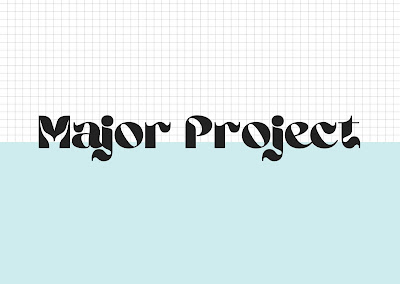Information Design: Flip Classroom
04.01.2021 - 29.01.2021 (Week #1 -Week #4)
Seerat Tayyab Mukhtar Qureshi - 0345576 (BDCM)
Flip Classroom
Information design
Week #1:
This weeks flip topic was on the different types of infographics and the various different online tools that could be used to create simple and good infographics. The task for the groups was to test out the online tools and redesign infographics and then rate them.
Fig 1.0: Topic 1 brief
Fig 1.1: Presentation done by Group 1
Week #2:
This weeks topic was the LATCH concept by Saul Wurman. One of our exercises is also based on this concept. LATCH stands for Location, Alphabet, Time, Category and Hierarchy and is a way of organising information in an infographic. My group had to present this week and our task was to organise a set of date into the LATCH concept. We chose shoe brands.
Fig 1.2: Topic 2 brief
Fig 1.3: My groups presentation
Week #3:
This weeks flip topic was Miller's Law of Chunking. This is also a way of organising information when creating infographics. He states that humans are able to remember 7 pieces of information on average plus minus two. the groups told us how chunking makes information more accessible and a lot easier to remember. Such as chunking a phone number into the country code, area code, line number etc so its we can remember it easier rather than see it as a long string of numbers.
Fig 1.4: Topic 3 brief
Fig 1.5: Presentation done by Group 5
Week #4:
This weeks topic was Manuel Lima's 9 Directives Manifesto. Lima has created an information visualisation manifesto that provides a working list on how to organise information. These directives have been recognised as a industry standard and they are listed below in the presentation given by Miss Anis.
Fig 1.6: Topic 4 brief
Fig 1.7: Presentation by group 8
Feedback:
Miss Anis said our presentation was concise and clear. She also liked the LATCH infographic we made. All the other presentations also received good feedback and generally everybody did quite well and it was quite informative.
Reflection:
Week #1: This quite informative as I didn't know there were online tools you could make infographics on. All of the infographics made by the groups using the online tools turned out pretty good even though they had the limitations of not being able to use the premium features the website had to offer. It's good to know that there are other options available besides the classic adobe apps.
Week #2: I think the LATCH method is quite interesting approach to organise information. Its very insightful to see that almost all data can be categorised into at least three categories from LATCH and it makes not only understanding the data set easier but also planning out your infographic. This was fun to do because it is going to be useful for our exercise coming up and generally in the future.
Week #3: This was quite an interesting topic and one of the groups even made a small fun exercise for all of us to participate in to see whether the law of chunking is effective or not and it actually proved to be effective. I actually really liked this method of organising information and I think I will use it for my Pasta Granny infographic because since it is a recipe, it should be easy to remember so the person does not have to keep looking at it again and again.
Week #4: This was once again quite an interesting presentation and i think the one that provided the most details on how to organise information. Not only that I also liked how it commented on human nature and tendencies when presented with information. I learnt that I was making some design mistakes that would bring down the effectiveness of my infographics through this.


Comments
Post a Comment